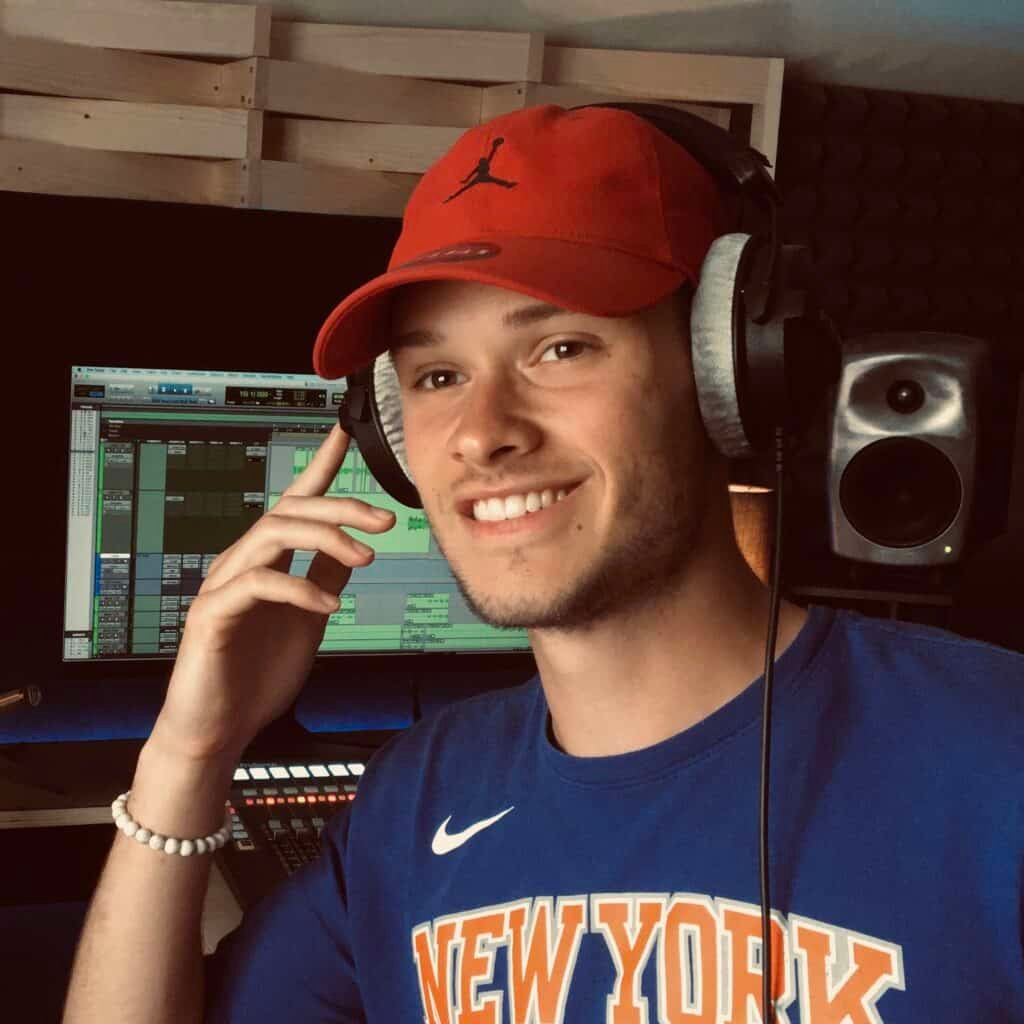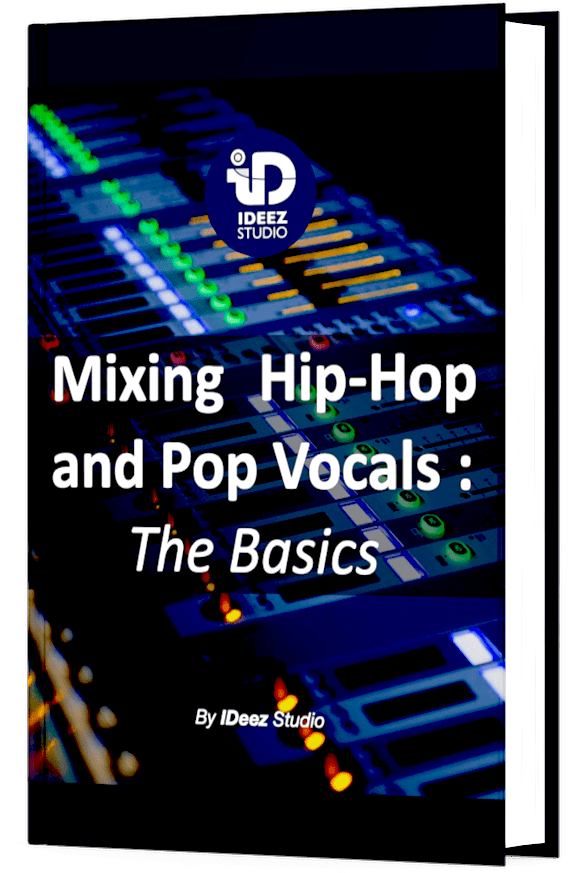Mixing vocals is not easy to learn. You need to have the right methods, the right workflow, be motivated to learn,… In short, it’s a lot to take in. But in the field of vocal mixing, very simple things can make your skills progress quickly. Here are the 9 main ones.

Important note : This article was written to bring out the ease behind the complex process of vocal mixing. The goal is not to give technical advice, but rather practical advice that will better guide you in learning how to mix vocals. That’s it for me, enjoy your reading!
1. Gain Staging
If there were several doors leading to more professional mixes, gain staging would be the big one. The one you MUST go through in order to access the others.
But in fact, what is gain staging? Without going into too much detail, gain staging is the principle according to which an audio source should (ideally) remain at a certain level during the entire production phase of a song (from recording to final mix).
As with everything, there is a middle ground. It’s exactly the same in the world of music production. In a mixing or recording session, too much gain will saturate your signal. Whereas with too little gain, the source (in our case, a voice) would be masked by background noise.
The best tool to ensure that the gain staging is good is the VU-meter. There are a lot of them on the plugin market, the one from Waves is very practical and easy to use. The meter of a VU-meter must be around 0 for a correct gain staging.

As this article is not intended to be technical, I simply advise you to keep a constant eye on the meters of your DAW. A meter that shows the color red is automatically a problem. When this kind of problem appears, you should always look for the problem before the meter that causes the problem.
Example: The meters of my output master track are saturated. The problem is not on the master fader, but on the tracks that enter it. You must always analyze the problem beforehand.
Correct Gain Staging

2. Use tools that you know
I can still see myself, a few years ago, wanting to quit for the simple reason that I saw mixing engineers using plugins from FabFilter, Waves, UAD and other big manufacturers that I couldn’t afford.
Then I bought my first Waves bundle, used them all in a mix session, and it was the worst mix of my life. No kidding. Anyway, thinking that expensive plugins will completely change the quality of your mixes is wrong, completely wrong.
I’m not telling you to never buy quality plugins, certainly not. If these plugins are expensive, there are reasons. But it’s very important in the learning process to keep in mind that your mixes will be of much better quality using plugins you know well rather than plugins you use once a decade.
If you only have free plugins and you can’t afford “better” plugins. No problem. Keep using those. Stock plugins are rarely bad plugins. If manufacturers give you access to them, it is to help you, not to hinder you.

3. EQ : Keep it simple
Every day I see some really nightmarish EQ in my clients’ sessions. And the worst part is that I often get the feeling that they don’t really know what they are doing.
Keep it simple! And if you think that the problem is the quality of the microphone, save a little money and buy a Rode NT1-A for example. But if the mic is of relatively good quality, there’s no reason to cut and boost frequency areas in an extreme way.

In fact, the priority, before using an EQ, is to know the 6 bands to focus on when mixing vocals. This will allow you to structure your mind and process your vocals step by step.
But if you sometimes need to boost or cut certain bands of 12… 15… 25dB! There is a problem either in the recording or in your working method.
4. Use your ears. Not your eyes
Nowadays, we live in an era where screens are everywhere. We can enjoy very precise meters in our DAWS, waveforms are ultra precise, the way to organize sessions is more and more elaborate,… in short, everything is very visual. This is the biggest trap for a novice in music mixing. Why is that?
In fact, you have to know that, physiologically, the eye guides the ear more than the ear influences the eye. This phenomenon is called the McGurk effect. I advise you to watch this video if you want to know more about this subject.
Just having your eyes on the mix session will, whether you like it or not, influence the listening experience. Even the smallest element that goes against what the ears are hearing can disrupt the way the brain translates the sound message.
So the message behind these explanations is simple: Use your ears, not your eyes. This can be done by doing things that are very easy to put in place, such as turning off your screen when you are listening in general, or closing your eyes after having equalized your voices.
I know it sounds stupid, but I can guarantee you that the best sound engineers in history do this.
5. Be Organized
No matter what the field, being organized is the foundation of quality work. This is even more true in the field of music mixing. A field in which one can quickly get lost if there is a lack of organization.
Among all the little techniques that allow to stay organized, it is the creation and the use of template that is the most important. Of course, creating elaborate templates can be time consuming, but that’s nothing compared to the time you’re likely to lose by starting over again and again with stalled mix sessions.
My best advice is to take the time to create a mix template in which you have a clear idea of what you want to achieve :
- Colors : The brain quickly classifies elements using colors. So don’t hesitate to color your tracks with what you feel is most instinctive in your organization.
- Typical tracks : In your template, it is important to create all the tracks that are likely to be used in each mix session. In the case of vocal mixing, for example, I will probably have, at the very least, a lead vocal track, a backing vocals track and an ad libs track.
- Bus System : Using auxiliaries and groups to facilitate routing within your session is also a priority. Having a “voice” bus, for example, is essential. No matter what the musical genre.
- Effects : Prepare your reverb and delay auxiliaries already. It will save you a lot of time!

6. Compare to reference tracks
Comparing your mixes with pro references is the easiest and most effective way to train your ear quickly. Indeed, the simple fact of going from one sound environment to another in a few seconds forces your ears to adapt quickly. Without you knowing it, it trains the ear.
It also allows you to recalibrate your ears to a reference, and to adapt your mix accordingly. It’s easy, fast and effective.
Many people are ashamed to do this. However, it is something that is done daily in the professional world.
So take the time, when your mix is relatively advanced, to listen to a song you know well (preferably on a CD), then go back to your mix. And so on until you find problems with frequencies, balance or dynamics.
7. Listen to your mixes in different places
Listening to your mixes on your studio monitors only is not enough. People listen to music on their phone, on their computer, in their car, in their kitchen, but certainly not on studio speakers.
That’s why it’s important to put yourself in the shoes of your future listeners to get an idea of what they will hear. It may sound ridiculous, but it is not uncommon, even in the biggest studios in the world, for sound engineers to listen to their mixes in their cars.
Sure, it’s a “poorer quality” listen, but you’ll sometimes discover big flaws with this kind of listening.
My advice would be, before making a final export, to make, for each mix session, a temporary export that you would listen to on several different media, more “general public”.
8. Be willing to learn mixing
In your learning process, you will hear from many people who will tell you. Practice, do your 10,000 hours and you’ll be a pro. That might be true, theoretically. But in practice, it’s completely wrong.
Practicing is not enough in itself. You have to be able to think, to ask yourself the right questions, to rethink your methods, to be organized,… in short, a lot of little things that make that, in the end, the simple fact of practicing is not enough.
Of course, it requires energy and motivation. But it is the price to pay to be very good in a field. Otherwise, it would be very (too) easy to be a professional sound engineer.
9. Take the time needed
In this field of vocal mixing, it is important not to be in constant search of results.
It is sometimes necessary to try things that will not work every time, to take the time (from time to time), to linger on details to learn more about a very precise domain, to learn how to use new plugins, to change one’s working methods,…
These are not necessarily very fun things, but you will feel that by doing this, your skills will grow faster than you think.
Trust the process. Sometimes it’s hard to stay the course, but time is your best friend!
Conclusion
That doesn’t sound too complicated, does it? Well, these little things you can implement now in your workflow can completely change your vision of voice mixing. If you can put all these elements in place in the right way, you will most likely see a change in your mixing skills. Maybe not tomorrow, maybe not next month, but the results will definitely be building.
Mindset and patience. These are two key elements towards success.
If you have any questions about this topic or about vocal mixing, please contact me, I’m always very happy to help!
My favorite tools for mixing pop and hip-hop music:
Plugins
In the field of auto-tune, I’m convinced that nothing’s better and more efficient than Antares Auto-Tune Pro. As for the EQ’s, FabFilter Pro-Q3 and Slate Digital Infinity EQ are, in my opinion, the best tools. For compression, I have 2 favorites plugins: Waves RComp and UAD EL8 Distressor.
As for reverb, I’m a big fan of the Soundtoys Little Plate, but generally, I go for the Valhalla VintageVerb for its versatility. I also love the Arturia Rev PLATE-140 and the UAD Pure Plate for its organic side.
Headphones
The closed headphones I love and will always love using for mixing pop and hip-hop music are the Beyerdynamic DT-770. As for the best open-back headphones, I use the Sennheiser HD600 headphones, and I’m really happy of them!
Monitors
Having a pair of Yamaha HS7 in its studio or home studio is always cool for more excitement while listening to your mixes. The Adam Audio T7V monitors are also super accurate. In my studio, I also have a pair of Genelec 8030 for their reliability.
Hardware gear
For anyone who wants to start using hardware in their mixes, I always recommend these 2 units from Klark Teknik: the EQP-KT and the 76-KT. Don’t forget to use good converters, such as the Apollo interfaces. This is essential for a good rendering.






